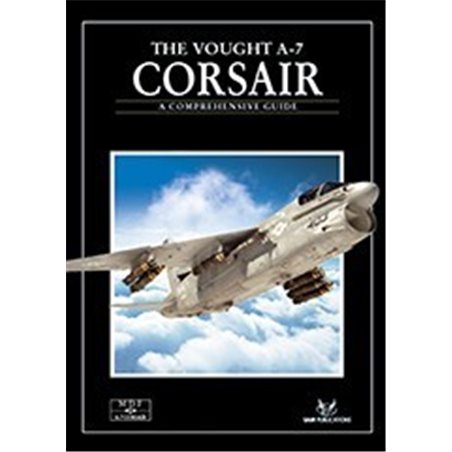- Out-of-Stock


By Andy Evans with Andy Renshaw
Developed as a successor to the A-4 Skyhawk, the A-7 Corsair II entered service with the United States Navy in 1966 and began operations over Vietnam in 1967. Some 1,569 examples of the A-7 were ultimately produced and operated by the United States, Greece, Portugal, and Thailand, and the Hellenic Air Force retired the last operational A-7s in 2014, while the US relinquished its aircraft after the Gulf War. Dubbed the ‘SLUF’ – ‘Short Little Ugly Fella’ in polite conversation, the origins of the A-7 hark back to a 1962 USN initiative, which produced the ‘VAX’ program, where the US Navy was looking for a follow-up design to replace the aging A-4. Key industry powerhouses put forward various submissions, and the Vought design, based on their successful F-8 Crusader was selected in February of 1964. The aircraft was then assigned the designation of ‘A-7’ with the name of ‘Corsair II’ - honouring the successful World War Two Vought F4U ‘Corsair’. Development of the A-7 platform was relatively fast, and the A-7A was taken into Navy service in 1966 with VA-147, and the upgraded A-7B, A-7C and the new two-seat TA-7C followed on. The USAF also realised the value of the A-7 as a strike platform, and ordered its own batch from Vought as the single seat A-7D, and two-seat A-7K, fitted with the license-built Rolls-Royce Spey turbofan engine. Many of these aircraft were handed to Air National Guard units, and saw their combat debut over Vietnam in 1972. The US Navy followed the USAF and adopted the A-7D as the A-7E, with modifications to suit carrier-based operations, and later used some modified two-seaters as the EA-7L electronic aggressor aircraft. The A-7G was a proposed export version for Switzerland, the A-7H and TA-7H were sold to Greece, and Portugal operated the A-7P and TA-7P, and Thailand operated a small number of A-7s until 2007. As a combat platform, the A-7 exceeded its expectations, and of the nearly 13,000 sorties flown over Vietnam just six aircraft were lost during the entire war, and the SLUF proved itself one of the most accurate bomb-delivery platforms of the conflict. The A-7 saw additional combat service in the 1983 Grenada invasion, and in actions over Lebanon, and during 1986, the aircraft was used against Libyan SAM missile positions. The aircraft then featured in the 1991 Gulf War, and saw some of its final service in the training role for the Lockheed F-117 Nighthawk program. This new MDF brings the story of this iconic aircraft to life, with background details, variants, operational roles, technical diagrams, colour artwork, extensive walk arounds, scale plans and how to model the A-7 in popular scales. This is a must have for the aviation enthusiast and modeller alike.
